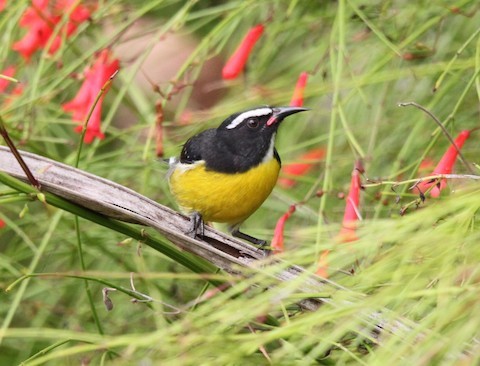Birdfinding.info ⇒ The Lesser Antillean form of Bananaquit is common to abundant in woodland edges, gardens, and scrub, and probably the most numerous resident songbird throughout its range. Readily found in the gardens and restaurants of resorts that host the multitudes of vacationing tourists who visit many of the islands in its range: such as Anguilla, Antigua, St. Martin, St. Kitts, St. Lucia, Barbados, Aruba, Bonaire, and Curaçao.
“Lesser Antillean Bananaquit”
Coereba flaveola bartholemica
Endemic to the Lesser Antilles from Anguilla to St. Lucia, Barbados, and the ABC Islands.
The boundaries between Bananaquit forms are confusing and unsettled. The “Lesser Antillean” form could be construed to include various combinations of populations that inhabit eastern Caribbean islands, but there is a core group of subspecies that differ slightly from one another, but share two distinctive traits: all-dark wings and wheezy, snappy songs. These are:
Bartholemica of the Leeward Islands from Anguilla to Dominica
Martinicana of Martinique and St. Lucia
Barbadensis of Barbados
Uropygialis of Aruba and Curaçao
Bonairensis of Bonaire
Other populations that might also be included in a more expanded understanding of the “Lesser Antillean” form are the “Dimorphic” aterrima and atrata of Grenada, the Grenadines, and St. Vincent, and the “Puerto Rican” portoricensis, plus sanctithomae and nelsoni of Culebra, Vieques, and the Virgin Islands.
Identification
Like other Bananaquits, it is readily recognized by its curved, sharp-tipped bill, broad white eyebrows, blackish mask and upperparts, and yellow breast.
Other distinctive features include a blackish throat, yellow rump, yellow shoulders, and a pink gape at the base of its bill.
Unlike other Bananaquit forms, “Lesser Antillean” populations generally have all-dark wings, unmarked except for thin wingbars.
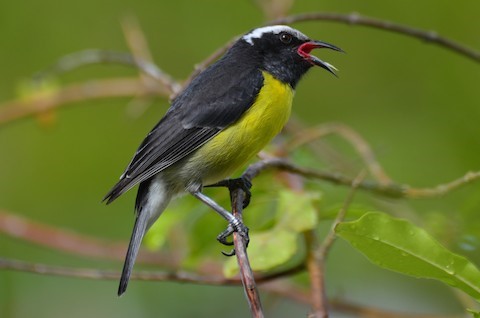
“Lesser Antillean Bananaquit”, C. f. bartholemica. (St. John’s, Antigua; April 5, 2014.) © Ben Lucking
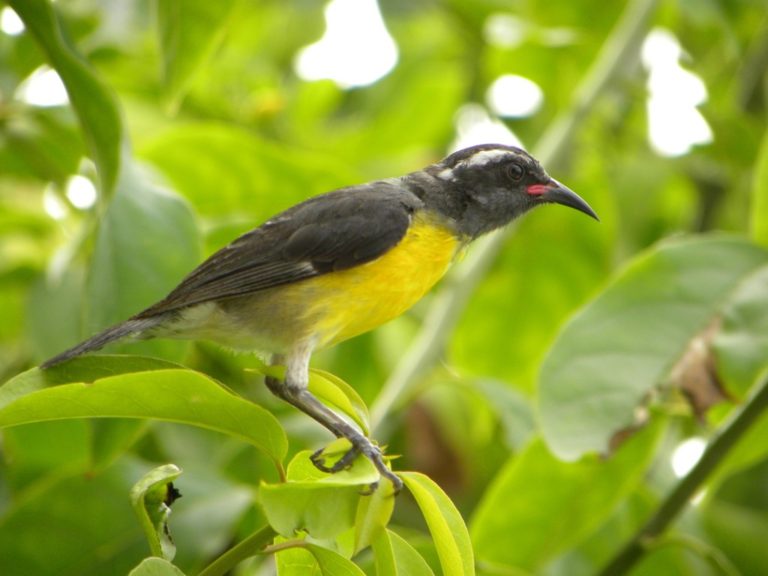
“Lesser Antillean Bananaquit”, C. f. bartholemica. (Jolly Harbour, Antigua; June 28, 2015.) © bdc564

“Lesser Antillean Bananaquit”, C. f. bartholemica. (Jolly Harbour, Antigua; January 25, 2020.) © Jacques Bélanger
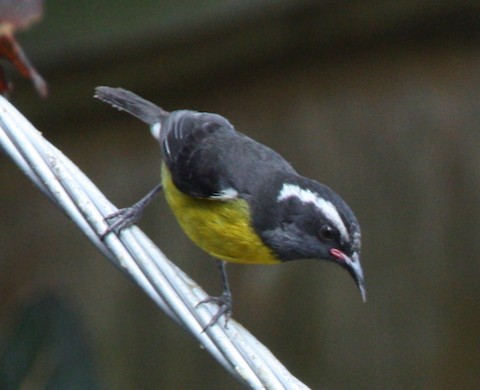
“Lesser Antillean Bananaquit”, C. f. bartholemica, with limited white scaling on forehead. (Rainforest Aerial Tram, Dominica; March 17, 2012.) © Ben Taylor

“Lesser Antillean Bananaquit”, C. f. bartholemica. (Sunset Bay, Dominica; November 12, 2009.) © John C. Mittermeier
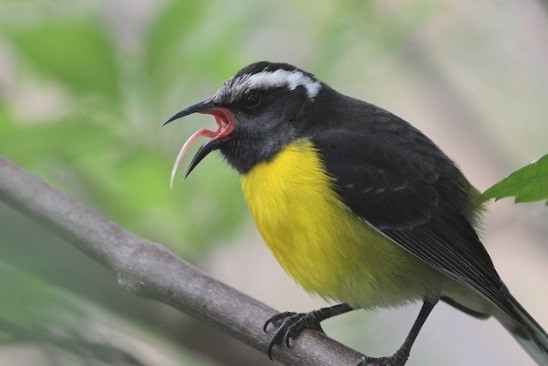
“Lesser Antillean Bananaquit,” C. f. bartholemica. (Barbuda; February 13, 2014.) © Stephen Gast

“Lesser Antillean Bananaquit”, C. f. bartholemica. (Galley Bay, Antigua; April 17, 2019.) © Warren Lynn
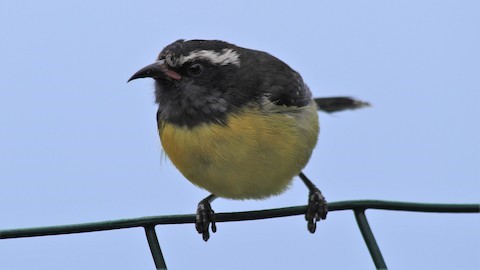
“Lesser Antillean Bananaquit”, C. f. bartholemica. (Upper Colihaut, Dominica; October 29, 2011.) © Guillaume Cussonneau
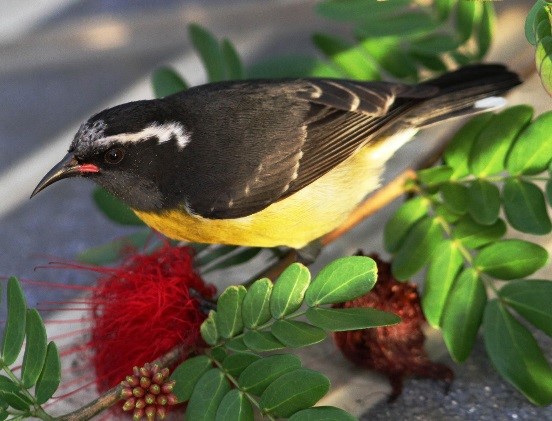
“Lesser Antillean Bananaquit”, C. f. bartholemica, with white scaling on forehead. (Roseau, Dominica; October 29, 2011.) © Mikko Pyhälä
Geographical Variation. “Lesser Antillean” populations differ somewhat in throat pattern and coloration.
Bartholemica of the Leeward Islands south to Dominica has a uniformly dark, charcoal-gray throat. It also differs from other subspecies in having variable amounts of white speckling or scaling on the forecrown—most extensive in the Dominica population. The St. Martin population is unusual in that a large portion have a white spot at the base of the primaries.
Martinicana of Martinique and St. Lucia has a mostly black throat with a large, sharply contrasting white wedge in the middle.
The widely separated populations barbadensis of Barbados and uropygialis of Aruba and Curaçao have a mostly blackish throat with a small white wedge at the base, and usually some whitish streaks in the blackish area.
Bonairensis of Bonaire is similar to the previous group, but typically has a larger white wedge on the throat and more whitish streaking on the blackish area. It also differs from the other subspecies in often having more white on the wings—bars and a spot at the base of the primaries.

“Lesser Antillean Bananaquit”, C. f. bartholemica, with a white wingspot—atypical of other Lesser Antillean populations. (Salines d’Orient, St. Martin; February 15, 2017.) © Steven Mlodinow

“Lesser Antillean Bananaquit”, C. f. bartholemica. (Simpson Bay, St. Maarten; March 14, 2018.) © Graham Williams

“Lesser Antillean Bananaquit”, C. f. bartholemica, with yellow in the brows—possibly a subadult. (Friars Bay Pond, St. Kitts; March 6, 2018.) © Steven Mlodinow
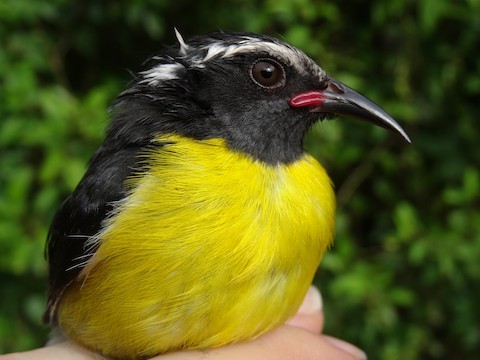
“Lesser Antillean Bananaquit”, C. f. bartholemica. (Smart Farm, Dominica; June 8, 2016.) © Tom Martin

“Lesser Antillean Bananaquit”, C. f. bartholemica. (Galley Bay, Antigua; April 17, 2019.) © Warren Lynn
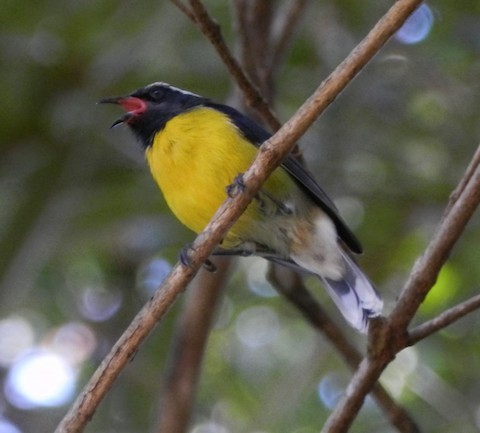
“Lesser Antillean Bananaquit”, C. f. bartholemica, showing its pink gape. (Syndicate Trail, Dominica; March 30, 2012.) © Adam Kent

“Lesser Antillean Bananaquit”, C. f. bartholemica, with white scaling on forehead. (Coulibistrie, Dominica; November 5, 2009.) © Postdlf
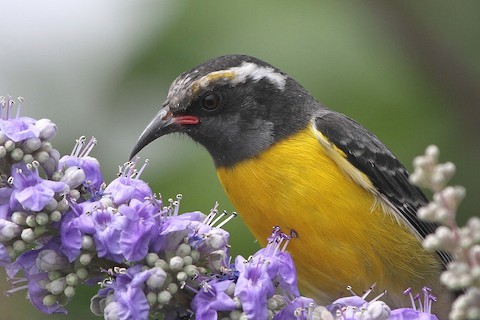
“Lesser Antillean Bananaquit,” C. f. bartholemica, with white scaling on forehead. (Barbuda; February 13, 2014.) © Stephen Gast
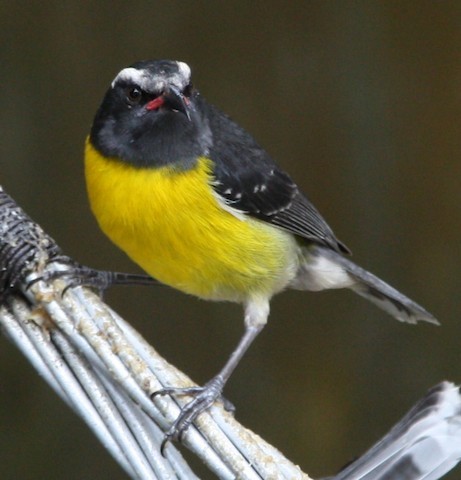
“Lesser Antillean Bananaquit”, C. f. bartholemica, with limited white scaling on forehead. (Rainforest Aerial Tram, Dominica; March 17, 2012.) © Ben Taylor
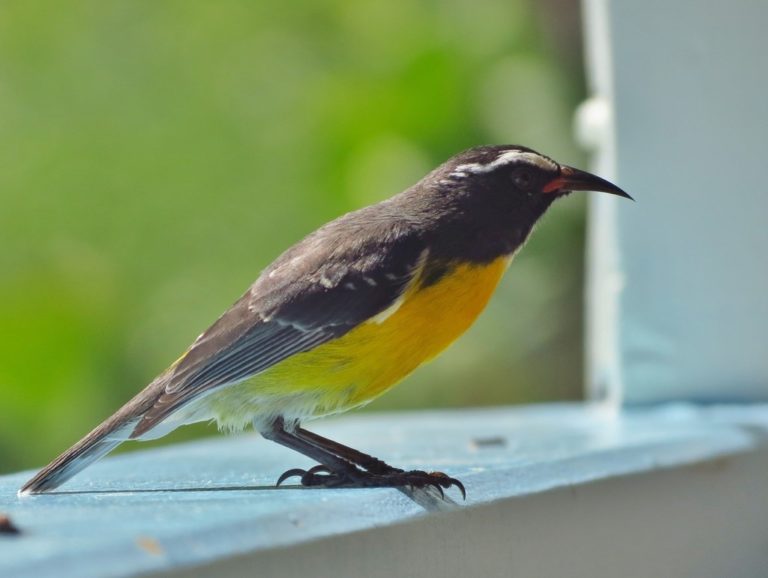
“Lesser Antillean Bananaquit”, C. f. martinicana. (Petite Anse, Martinique; January 16, 2016.) © Annika Lindqvist
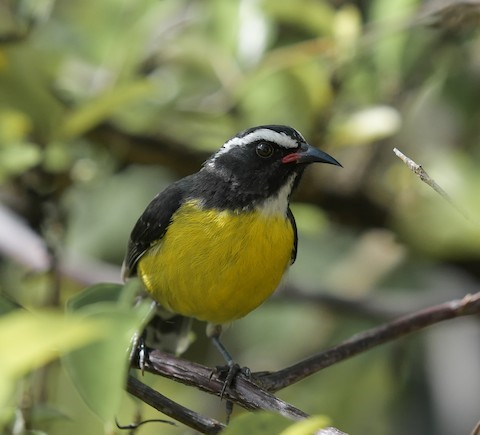
“Lesser Antillean Bananaquit”, C. f. martinicana. (Gros Islet, St. Lucia; March 16, 2019.) © Marc Regnier
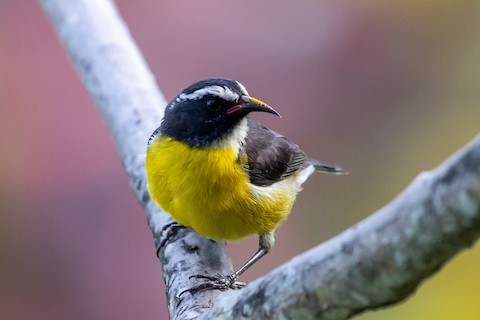
“Lesser Antillean Bananaquit”, C. f. martinicana. (Soufrière, St. Lucia; April 1, 2021.) © Kevin Berkoff

“Lesser Antillean Bananaquit”, C. f. martinicana. (Petite Anse, Martinique; January 10, 2016.) © Annika Lindqvist
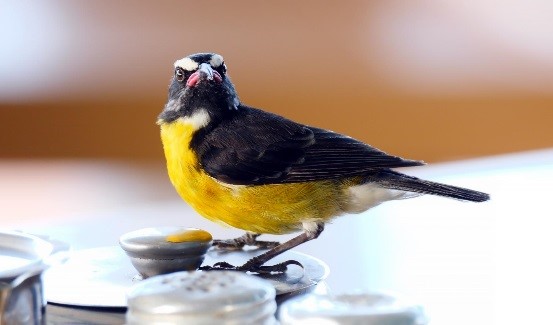
“Lesser Antillean Bananaquit”, C. f. barbadensis, showing small white patch on throat. (Oistins, Barbados; June 15, 2017.) © Josep del Hoyo

“Lesser Antillean Bananaquit”, C. f. martinicana. (Fort-de-France, Martinique; October 19, 2020.) © guillaumeptr
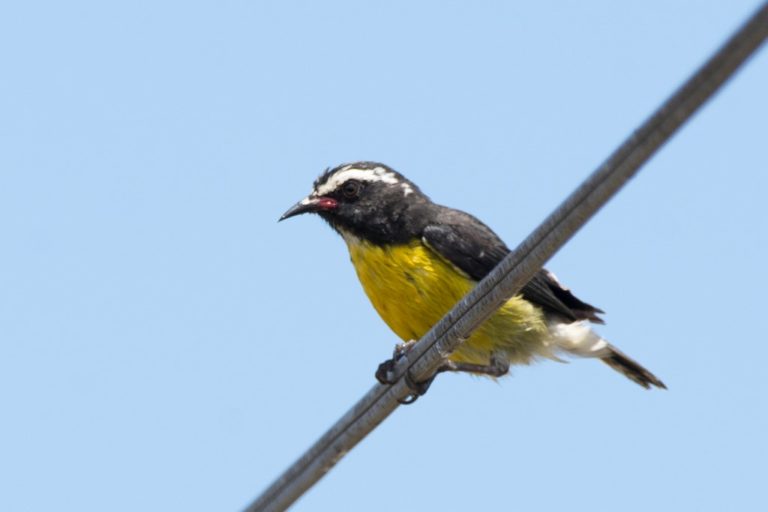
“Lesser Antillean Bananaquit”, C. f. barbadensis, showing small white patch on throat. (Oistins, Barbados; June 17, 2018.) © Jerome Foster
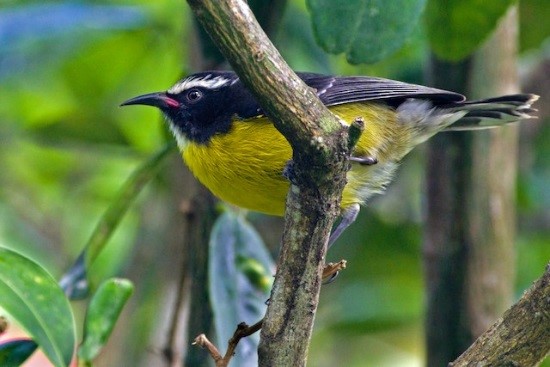
“Lesser Antillean Bananaquit”, C. f. martinicana. (Habitation Belfort, Martinique; December 27, 2017.) © Rob Dickerson
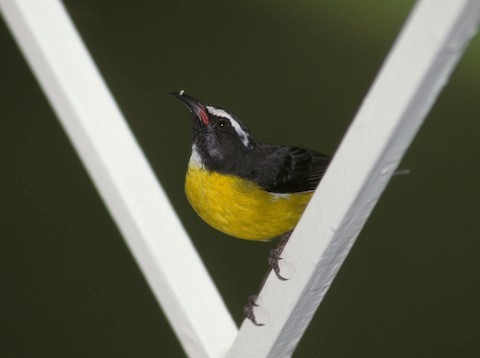
“Lesser Antillean Bananaquit”, C. f. barbadensis, showing small white patch on throat. (Sandy Lane, Holetown, Barbados; November 2, 1995.) © Marvin Hyett
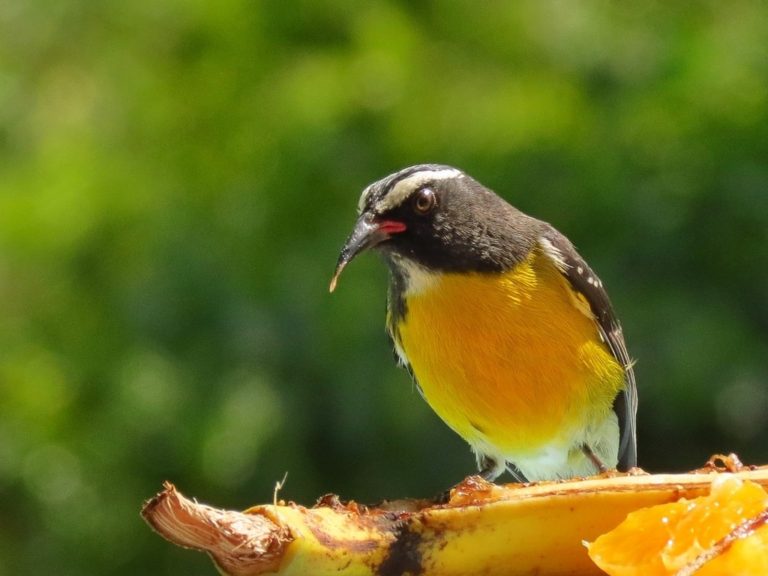
“Lesser Antillean Bananaquit”, C. f. martinicana. (Petite Anse, Martinique; January 14, 2016.) © Annika Lindqvist
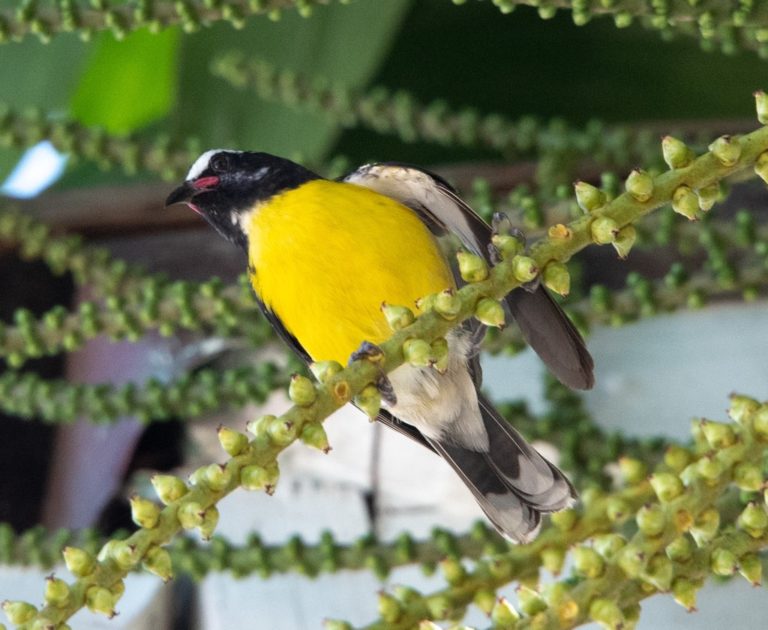
“Lesser Antillean Bananaquit”, C. f. barbadensis, showing small white patch on throat and partial whitish whisker stripe. (Speightstown, Barbados; December 31, 2019.) © Don Loarie
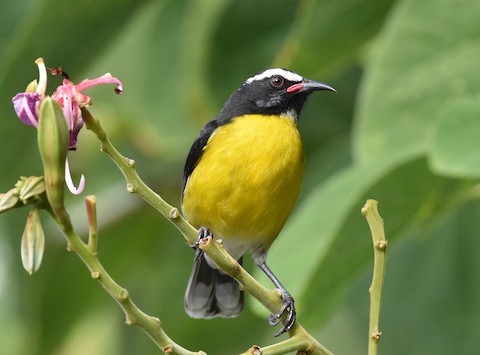
“Lesser Antillean Bananaquit”, C. f. barbadensis, showing small white patch on throat. (Bridgetown, Barbados; December 20, 2017.) © Henry Trombley
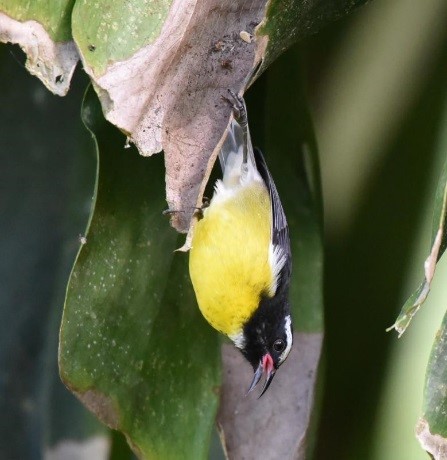
“Lesser Antillean Bananaquit”, C. f. barbadensis, showing small white patch on throat. (Barbados; December 18, 2015.) © magloor
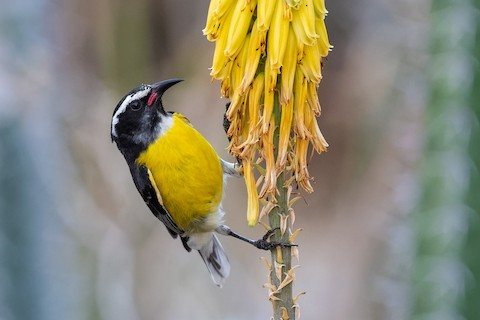
“Lesser Antillean Bananaquit”, C. f. uropygialis. (Spaans Lagoon, Aruba; February 26, 2020.) © Don Danko
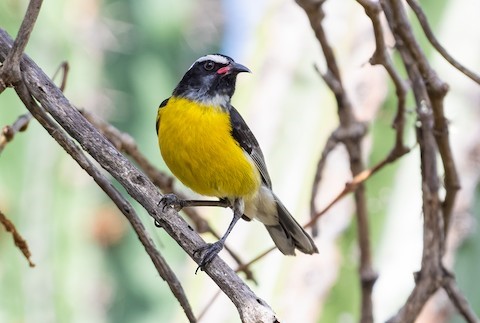
“Lesser Antillean Bananaquit”, C. f. uropygialis. (Jamanota, Aruba; February 28, 2020.) © Don Danko

“Lesser Antillean Bananaquit”, C. f. martinicana, showing extensively white throat. (Diamond Falls Botanical Gardens, St. Lucia; October 18, 2011.) © Sarah Rees
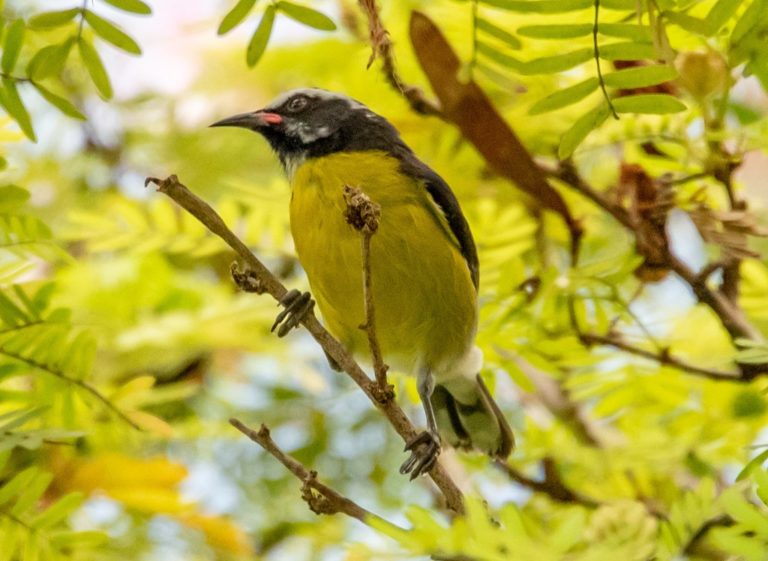
“Lesser Antillean Bananaquit”, C. f. barbadensis, showing small white patch on throat. (Graeme Hall Nature Sanctuary, Barbados; December 14, 2017.) © Larry Therrien
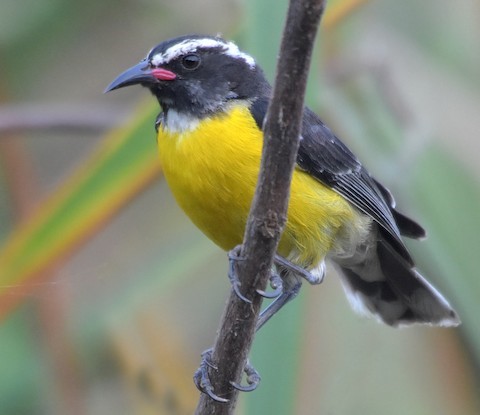
“Lesser Antillean Bananaquit”, C. f. uropygialis. (Bubali Bird Sanctuary, Aruba; April 13, 2017.) © Steven Mlodinow

“Lesser Antillean Bananaquit”, C. f. uropygialis. (Spaans Lagoon, Aruba; April 26, 2018.) © Michael Tromp

“Lesser Antillean Bananaquit”, C. f. uropygialis. (Spaans Lagoon, Aruba; January 22, 2020.) © Michiel Oversteegen

“Lesser Antillean Bananaquit”, C. f. uropygialis. (Willemstad, Curaçao; November 1, 2015.) © Bernd Dietrich
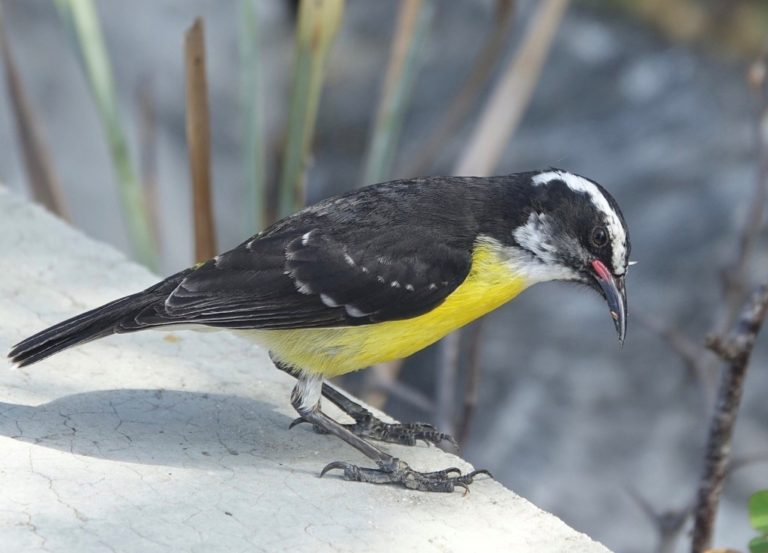
“Lesser Antillean Bananaquit”, C. f. bonairensis. (Bonaire; April 21, 2019.) © Bert Wessling

“Lesser Antillean Bananaquit”, C. f. uropygialis, eating at a restaurant. (Casibari Rock Formations, Aruba; March 24, 2019.) © Kim Ramos
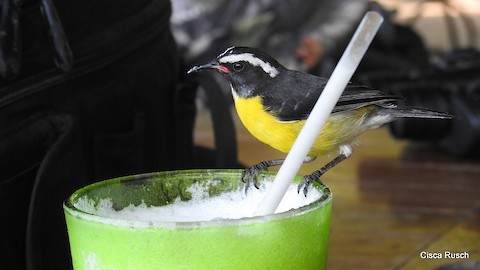
“Lesser Antillean Bananaquit”, C. f. uropygialis, eating at a restaurant. (Curaçao; September 29, 2017.) © Cisca Rusch
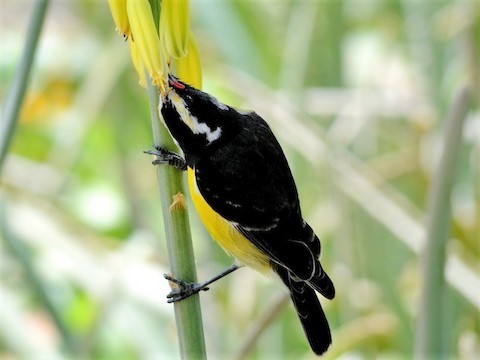
“Lesser Antillean Bananaquit”, C. f. bonairensis. (Harbour Village, Bonaire; February 14, 2010.) © Anya Auerbach
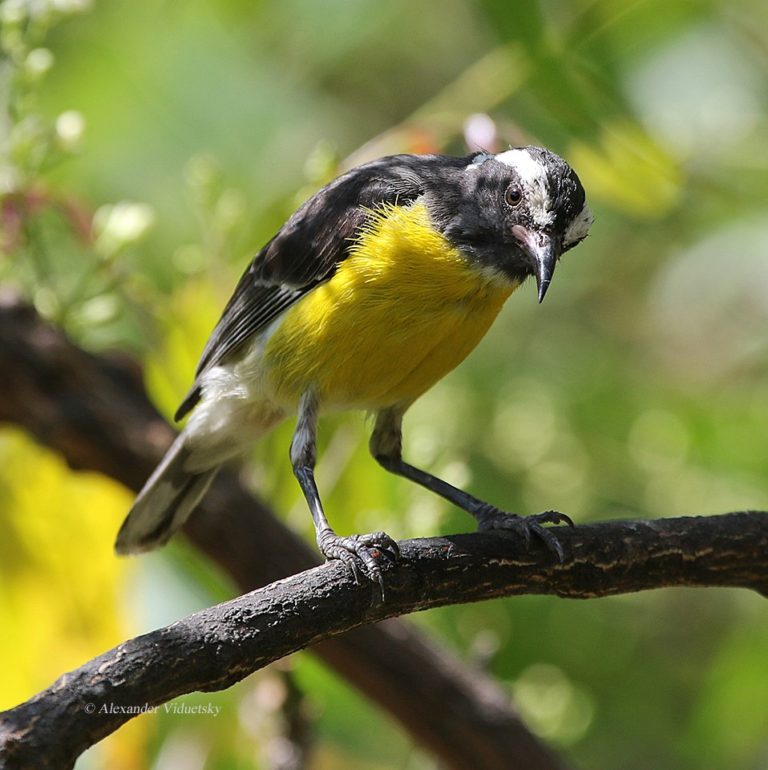
“Lesser Antillean Bananaquit”, C. f. uropygialis. (Palm Beach, Aruba; April 12, 2016.) © Alexander Viduetsky
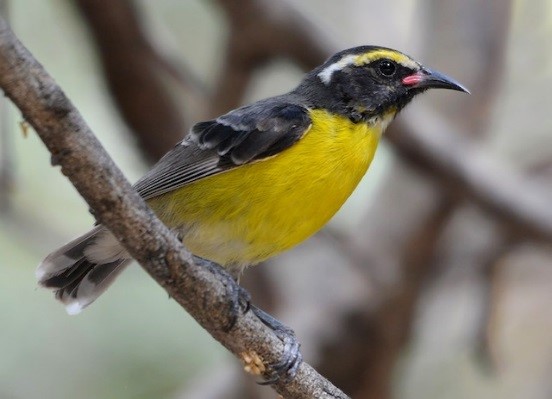
“Lesser Antillean Bananaquit”, C. f. uropygialis, with yellow in the brows—possibly a subadult. (Bubali Bird Sanctuary, Aruba; April 15, 2017.) © Steve Mlodinow

“Lesser Antillean Bananaquit”, C. f. uropygialis. (Noord, Aruba; February 16, 2010.) © Will Sweet
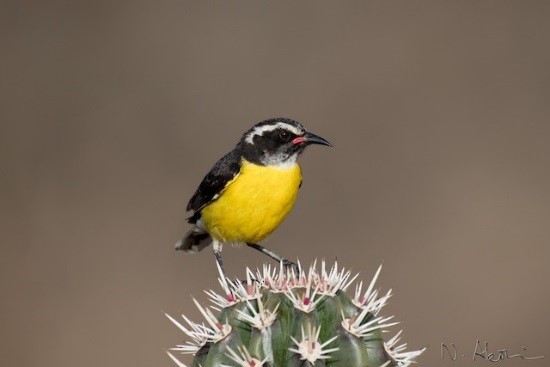
“Lesser Antillean Bananaquit”, C. f. bonairensis. (Washington Slagbaai National Park, Bonaire; July 20, 2016.) © Nagi Aboulenein
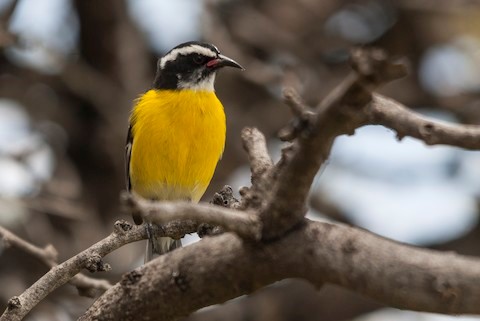
“Lesser Antillean Bananaquit”, C. f. bonairensis. (Bonaire; May 3, 2011.) © Markus Craig
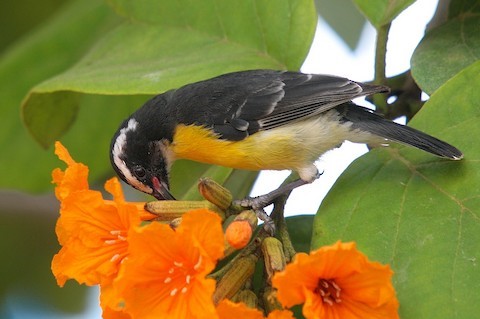
“Lesser Antillean Bananaquit”, C. f. bonairensis. (Bonaire; June 8, 2009.) © Rob Belterman
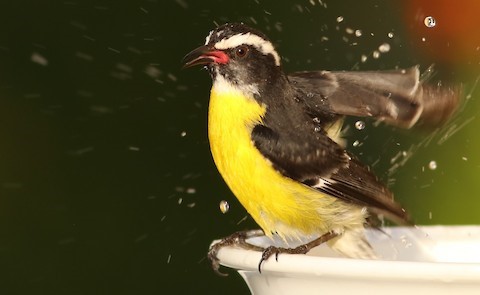
“Lesser Antillean Bananaquit”, C. f. bonairensis. (Kralendijk, Bonaire; March 9, 2020.) © Kathleen Crawford
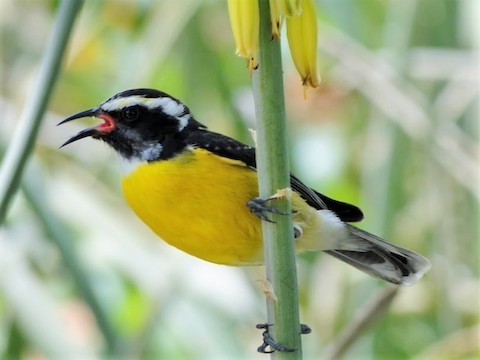
“Lesser Antillean Bananaquit”, C. f. bonairensis. (Harbour Village, Bonaire; February 14, 2010.) © Anya Auerbach
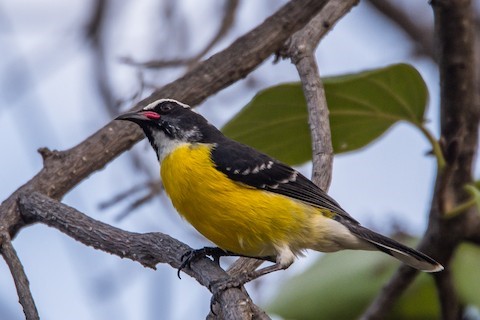
“Lesser Antillean Bananaquit”, C. f. bonairensis. (Kralendijk, Bonaire; November 20, 2019.) © Frank King

“Lesser Antillean Bananaquit”, C. f. bonairensis. (Lac Bay, Bonaire; February 16, 2017.) © Clinton S. Boyd
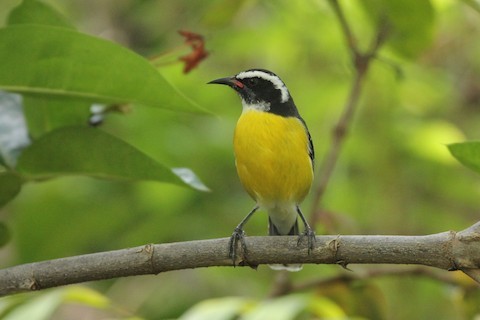
“Lesser Antillean Bananaquit”, C. f. bonairensis. (Kralendijk, Bonaire; February 10, 2020.) © Sander Willems
Immatures are similar to adults but have mostly brownish upperparts and dingy-yellow underparts and eyebrows.
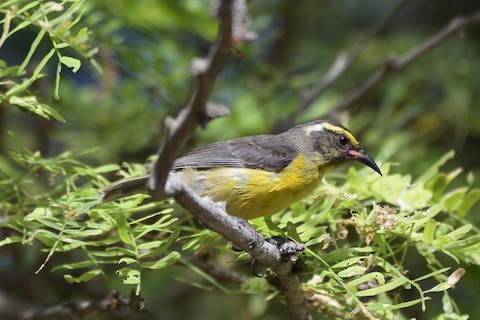
“Lesser Antillean Bananaquit”, C. f. uropygialis, immature. (Bubali Bird Sanctuary, Aruba; May 13, 2020.) © Michael Tromp
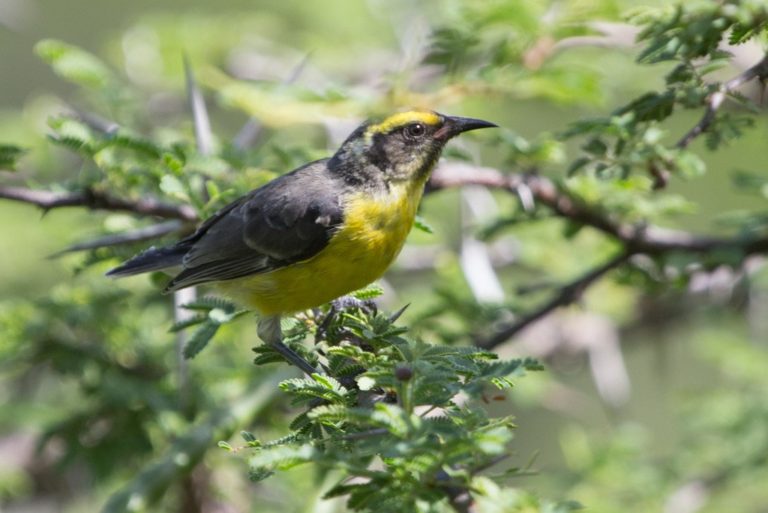
“Lesser Antillean Bananaquit”, C. f. uropygialis, immature. (Curaçao; November 20, 2018.) © avocat
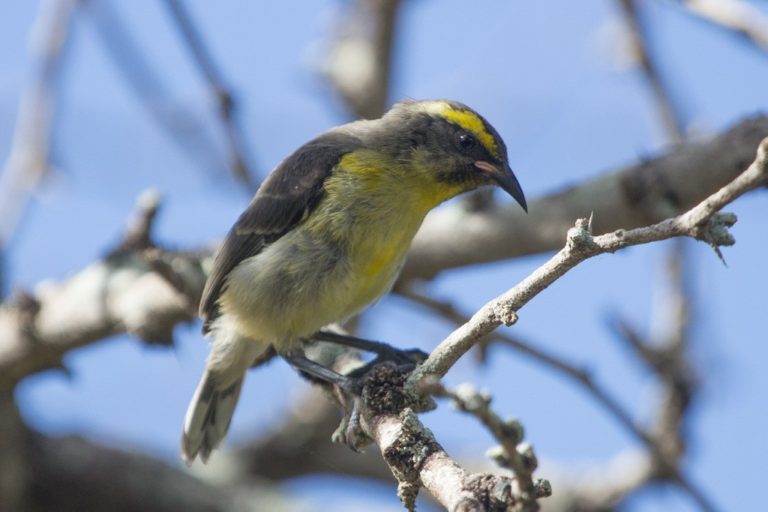
“Lesser Antillean Bananaquit”, C. f. uropygialis, immature. (Curaçao; November 23, 2018.) © avocat

“Lesser Antillean Bananaquit”, C. f. bonairensis, immature. (Santa Barbara Crowns, Bonaire; February 9, 2020.) © Sander Willems
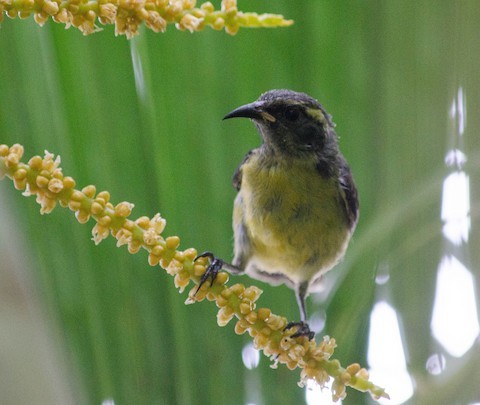
“Lesser Antillean Bananaquit”, C. f. bartholemica, immature. (Roseau, Dominica; July 25, 2015.) © Neil DeMaster
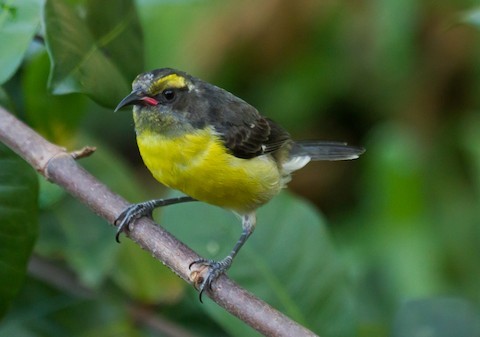
“Lesser Antillean Bananaquit”, C. f. bartholemica, immature. (Great Salt Pond, St. Maarten; August 10, 2017.) © Binkie van Es

“Lesser Antillean Bananaquit”, C. f. uropygialis, with yellow eyebrows—likely a subadult. (Aruba; October 27, 2007.) © Steven Mlodinow
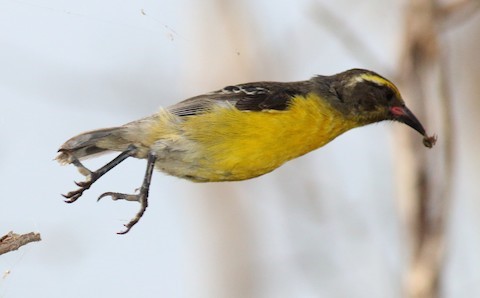
“Lesser Antillean Bananaquit”, C. f. uropygialis, subadult, hanging in midair. (Bubali Bird Sanctuary, Aruba; October 7, 2016.) © Rick Folkening
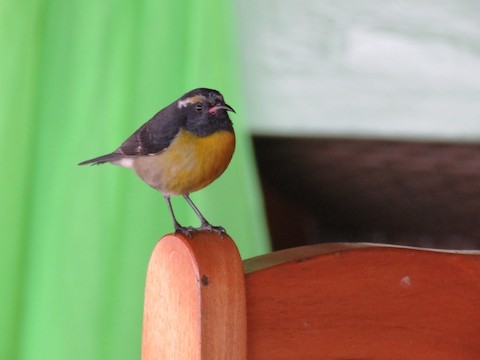
“Lesser Antillean Bananaquit”, C. f. bartholemica, with dingy underparts and yellow in the brows—likely subadult. (Portsmouth, Dominica; December 20, 2016.) © Thomas Brooks

“Lesser Antillean Bananaquit”, C. f. bartholemica, subadult. (Roseau, Dominica; July 25, 2015.) © Neil DeMaster
Cf. “Puerto Rican Bananaquit”. The “Puerto Rican Bananaquit” (portoricensis, plus the two Virgin Islands subspecies, sanctithomae and newtoni) differs from the nearest “Lesser Antillean” subspecies (bartholemica) of the Leeward Islands most obviously in the wing pattern: “Puerto Rican” has a white spot at the base of the primaries, whereas “Lesser Antillean” has either entirely blackish wings or very thin pale wingbars.
Notes
Polytypic form consisting of five recognized subspecies, collectively comprising one of approximately ten potentially distinct forms of Bananaquit. The “Lesser Antillean Bananaquit” includes: bartholemica of the Leeward Islands from Anguilla to Dominica; martinicana of Martinique and St. Lucia; barbadensis of Barbados; uropygialis of Aruba and Curaçao; and bonairensis of Bonaire. The taxonomic status and scope of this form are unsettled. Most references that distinguish “Puerto Rican” from “Lesser Antillean” classify the Virgin Islands subspecies under the latter, but they have stronger affinities (visual, vocal, and geographical) with “Puerto Rican”.
Frontiers of Taxonomy: Bunches of Bananaquits. The forty-or-so subspecies of Bananaquit vary significantly in plumage and voice, and it seems clear that what has traditionally been recognized as a single species consists of several distinguishable forms, which likely represent at least two species, and perhaps as many as ten, but it is a complex puzzle.
Mitochondrial DNA analysis (Bellemain et al. 2008) indicates that the oldest splits are among three lineages: “Bahama” (bahamensis, plus the “Cozumel” subspecies, caboti); “Greater Antillean” (Jamaican flaveola, Hispaniolan bananivora, Cayman sharpei, and likely also the similar tricolor of Providencia and oblita of San Andrés); and the rest (subdivided into “Lesser Antillean” and “Continental” groups).
The same analysis indicates that oldest division among the “Lesser Antillean” lineages is “Puerto Rican” (portoricensis—and possibly also sanctithomae and newtoni of the Virgin Islands), which has the appearance of “Greater Antillean” with a “Lesser Antillean” voice. The analysis also found a significant division between the “Dimorphic” form (aterrima of Grenada and atrata of St. Vincent) and the remaining “Lesser Antillean” subspecies (bartholemica plus martinicana, barbadensis, uropygialis, and bonairensis). Finally, not sampled in the analysis, but apparently related to “Dimorphic”, is the Venezuelan “Blackish” form (laurae plus melanornis, lowii, and possibly also frailensis).
References
Bellemain, E., E. Bermingham, and R.E. Ricklefs. 2008. The dynamic evolutionary history of the bananaquit (Coereba flaveola) in the Caribbean revealed by a multigene analysis. Evolutionary Biology 8:240.
Bellemain, E., O.E. Gaggiotti, A. Fahey, E. Bermingham, and R.E. Ricklefs. 2012. Demographic history and genetic diversity in West Indian Coereba flaveola populations. Genetica 140:137-148.
BirdLife International. 2016. Coereba flaveola. The IUCN Red List of Threatened Species 2016: e.T22722080A94747415. https://dx.doi.org/10.2305/IUCN.UK.2016-3.RLTS.T22722080A94747415.en. (Accessed May 27, 2021.)
eBird. 2021. eBird: An online database of bird distribution and abundance. Cornell Lab of Ornithology, Ithaca, N.Y. http://www.ebird.org. (Accessed May 27, 2021.)
Kirwan, G.M., A. Levesque, M. Oberle, and C.J. Sharpe. 2019. Birds of the West Indies. Lynx Edicions, Barcelona.
Raffaele, H., J. Wiley, O. Garrido, A. Keith, and J. Raffaele. 1998. A Guide to the Birds of the West Indies. Princeton University Press, Princeton, N.J.
Seutin, G., N.K. Klein, R.E. Ricklefs, and E. Bermingham. 1994. Historical Biogeography of the Bananaquit (Coereba flaveola) in the Caribbean Region: A Mitochondrial DNA Assessment. Evolution 48:1041-1061.
Wells, J.V., and A.C. Wells. 2017. Birds of Aruba, Bonaire, and Curaçao. Cornell University Press.
Xeno-Canto. 2021. Bananaquit – Coereba flaveola. https://www.xeno-canto.org/species/Coereba-flaveola. (Accessed May 27, 2021.)
